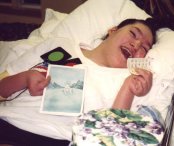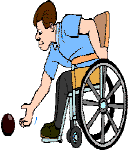The Cerebral Palsy Network
- Spasticity Chart
- Team Approach
- Oral Medications
- ITB
- Rhizotomy
- Orthopedic Surgery
- Brain Injuries
- Casts & Braces
- Physical Therapy
- Glossary Terms
- Credits
- Botox
Around CPN
Resource
Center
The Team Approach
to Assessment and Treatment of Spasticity
Prepared as a team effort under the direction of A. Leland Albright, M.D. and Stanley D. Klein, Ph.D.
No single spasticity treatment is appropriate for every individual and no treatment is perfect. Because there are opinions, parents, individuals with spasticity, primary care physicians and other professional must work together as part of an effective treatment team.
Team approach
The family and the individual are the center part of the treatment team. After them it is important to have a solid clinical team. Indeed, a multidisciplinary clinical team approach is the most effective method for evaluation, goal-setting and treatment planning. It makes sense for specialists from related health care fields to meet with the individual with spasticity and parents or care providers to make treatment decisions. The clinical team needs to confer regularly to reevaluate to the individual's condition and modify goals and treatment plans as appropriate.
At typical medical centers serving individuals with spasticity, several different specialists participate, including (but not limited to):
A neurosurgeon to examine and surgically treat conditions affecting the nervous system -brain, spinal cord and nerves:
an orthopedic surgeon to examine and surgically treat conditions affecting the Musculoskeletal system - bones, joints, muscles and tendons;
a physiatrist to examine and treat via non-surgical interventions such as medication, therapies (physical, occupation, speech) and adaptive medical equipment.
Other specialists who often figure prominently on the clinical team roster include pediatric neurologists, psychologists, developmental pediatricians.
The clinical team also includes:
the child's pediatrician, who can provide critical insight into the original diagnosis and subsequent treatments and general health;
a physical therapist to assess gross motor skills- sitting, walking, movement patterns, posture, balance- and suggest treatments;
an occupational therapist to assess fine motor skills- eating, dressing, grooming, other activities of daily living- and suggest treatments;
a social worker to assess family needs as well as the personal and social needs of the individual with spasticity. Speech language therapists, nurses and nutritionists may be part of the team as well.
Usually, each clinician meets with the person with spasticity either individually or with another clinical team member.
Clinicians may also meet with parents or care providers. During this process, various questions are asked and the individual is examined. A discussion of prior therapies and possible goals for the future may also be discussed. Then, members of the clinical team and family members usually meet to review the observations of each clinician, prioritize goals and develop a treatment plan.
While individual centers structure meetings differently, ideally, within the model of family-centered care, the individual and the family play a major role in determining goals. The professionals offer guidance based on their clinical examinations, experience and specialized knowledge.
Goals can vary considerably and sometimes, particularly with young children who are still developing, goals and intervention strategies may not be clear. In these cases, the team will probably reevaluate the child in six to 12 months to reconsider goals and treatments.
Most importantly, everyone need to weigh all of the treatment implications; the potential for reaching goals and the possibility of disappointments, side effects, and poor results.
The following articles will discuss interventions currently available to treat spasticity. These need to be considered systematically as a total approach to modifying an individual's quality of life. Individuals may have other special needs, including speech, hearing and/or vision impairments, seizures, learning disabilities or mental retardation. This means that individuals with disabilities and their family members need to collaborate with health care and education specialists.
Credit for this article goes to A. Leland Albright, M.D. and Stanley D. Klein, Ph.D. and Exceptional Parent Magazine.
This site designed & maintained by Mystic Dawn Web Creations. The Cerebral Palsy Networkę1997/2003. All graphics are the exclusive property of CPN, unless otherwise indicated. Contact CPN at Cerebral Palsy Network for further information.
Last updated 03/24/03

Amanda the reason CPN was
started
CPN
Reunion 2003

CP
Research
What's happening Today with
Cerebral Palsy

Special
Olympics
What's happening with
Special Olympics in 2003

CP
& Education
What's happening with
Special Need and Education in 2003